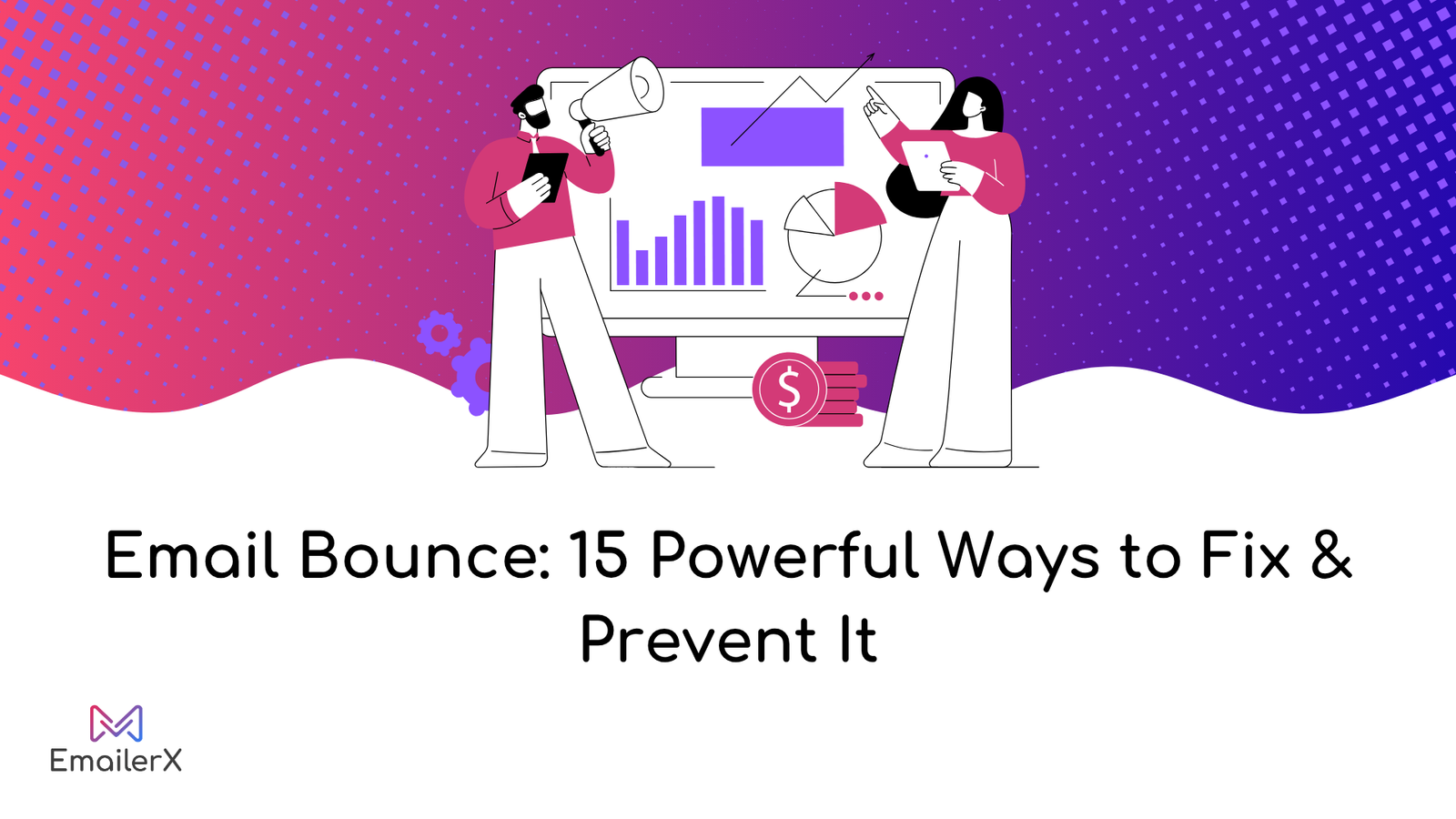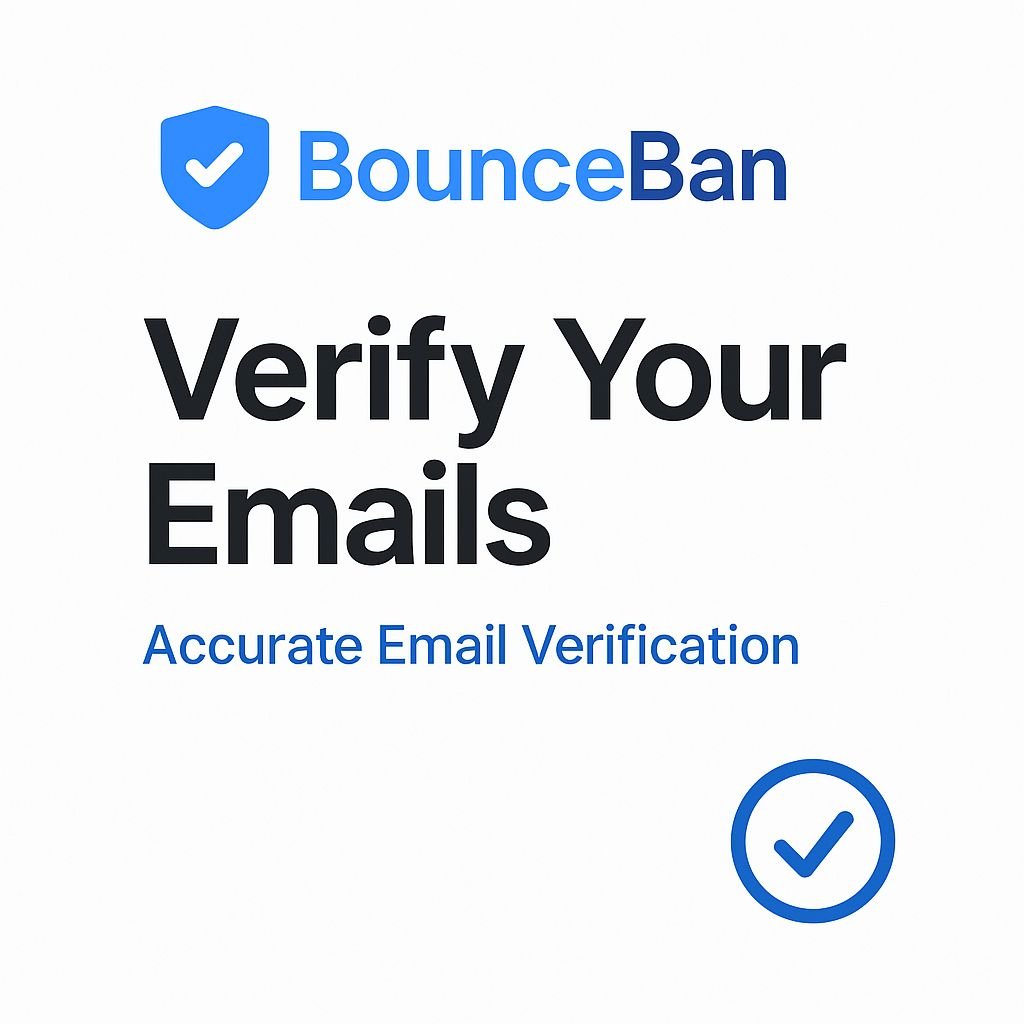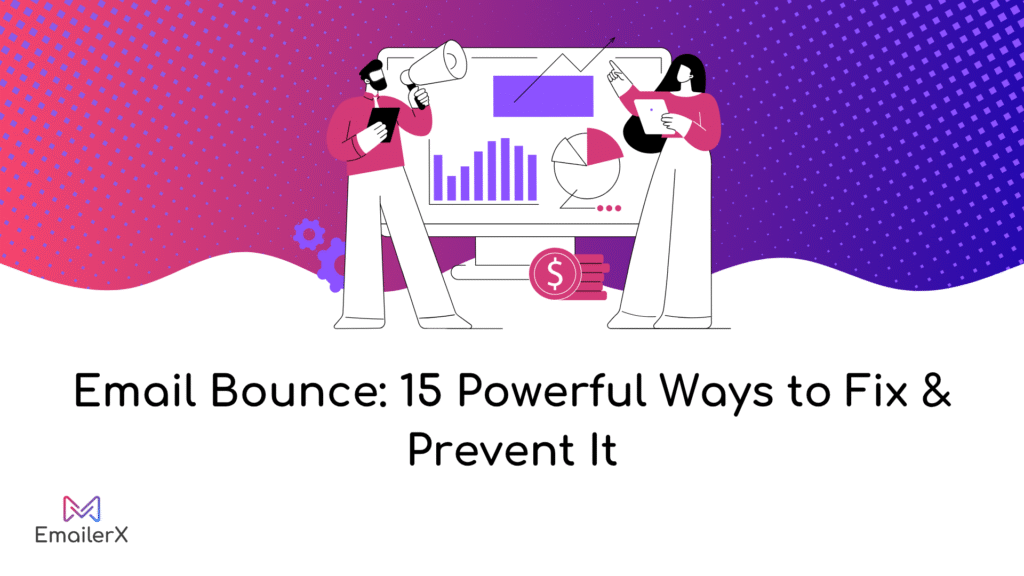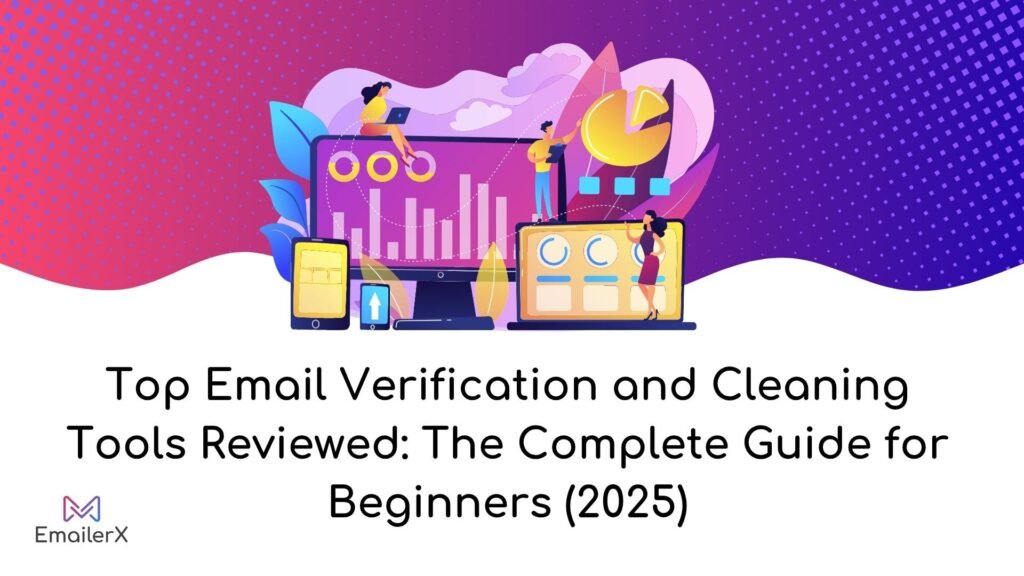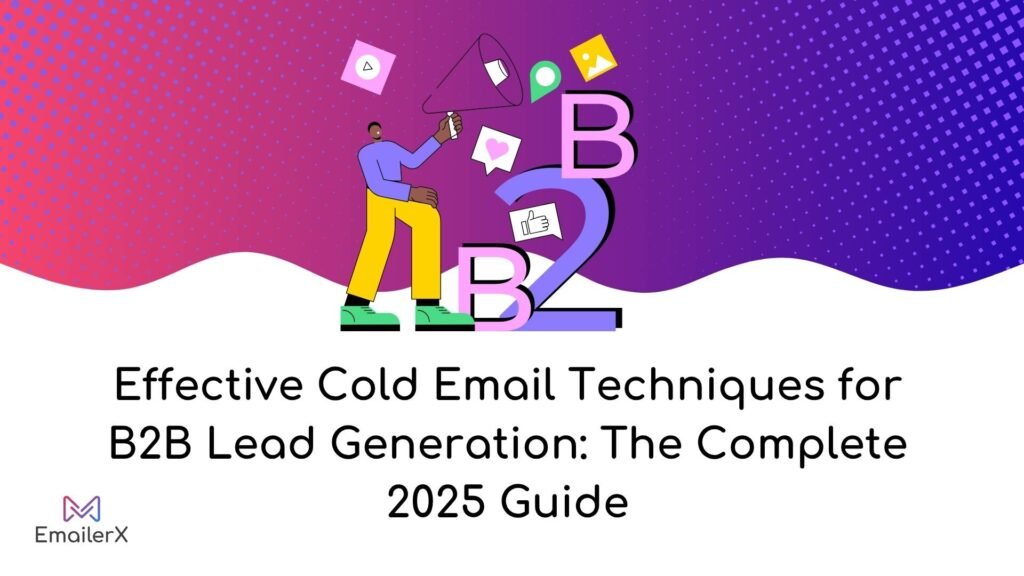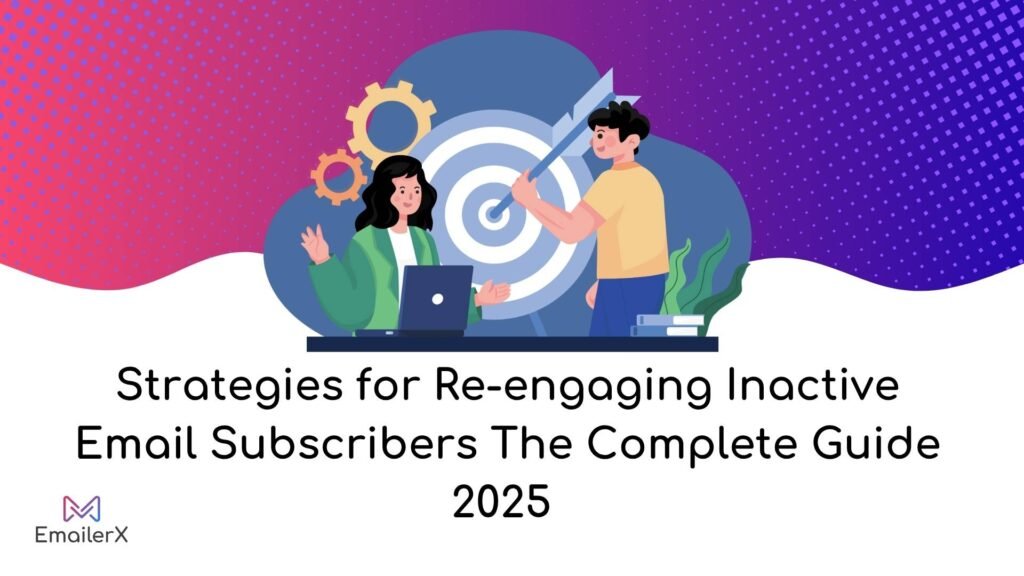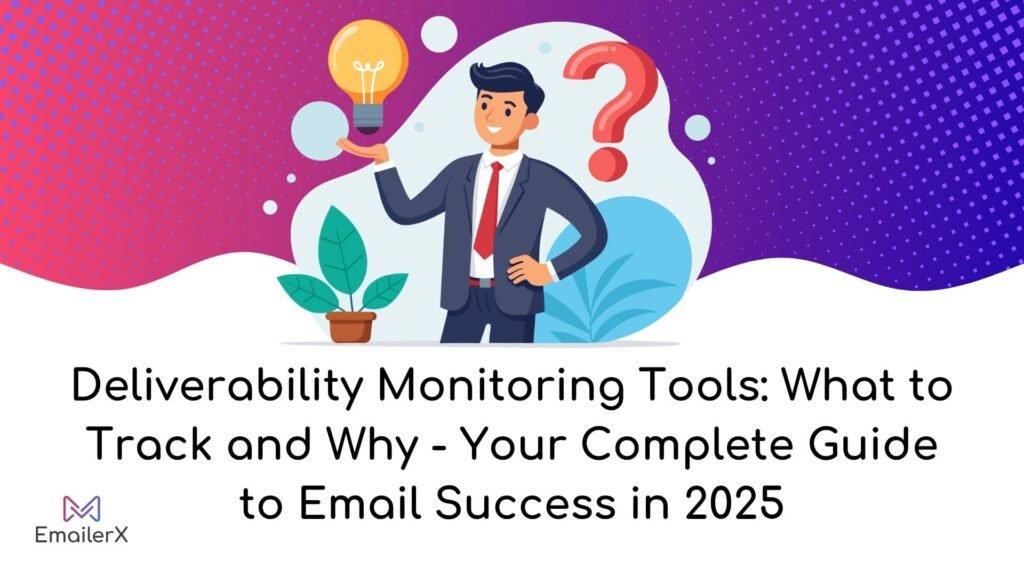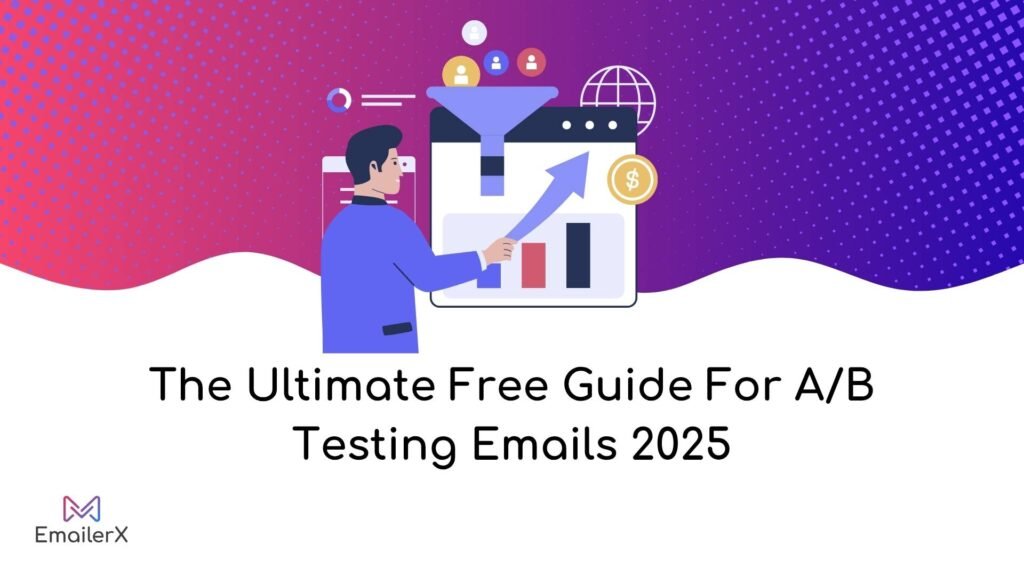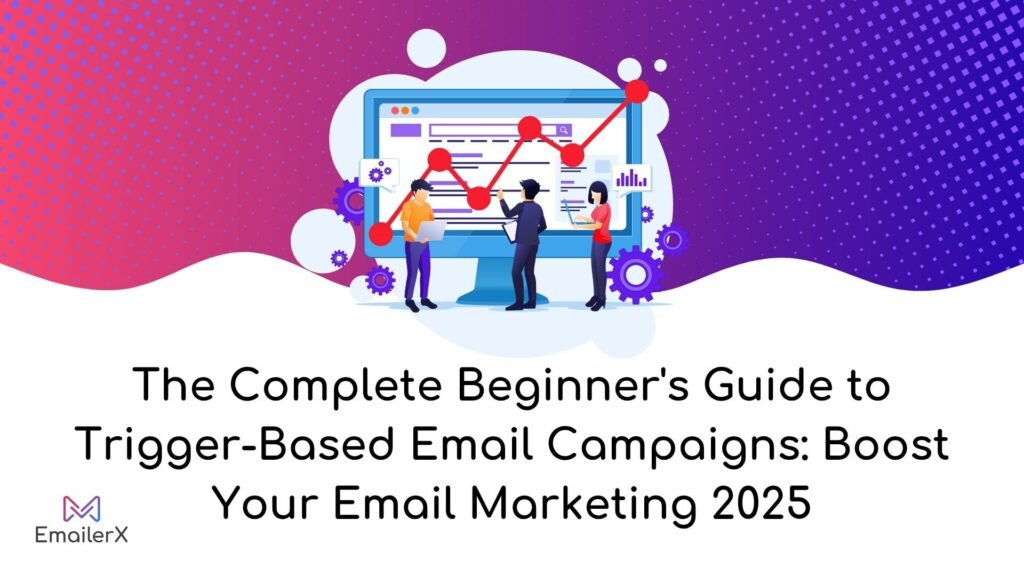Email bounce is an essential term used in email marketing. If your emails do not reach the recipient and instead come back with an error message, it’s an email bounce. In this in-depth tutorial, we will go through what email bounce is, its causes, how to cure it, and most importantly, how to minimize your bounce rate to safeguard your sender reputation and enhance email deliverability.
Table of Contents
ToggleWhat is an Email Bounce?

An email bounce is when a message you send never enters the recipient’s inbox and comes back with a delivery failure notice. It may be caused by a full mail box, bad address, or blocked server
Email Bounce Rate = (Total Undelivered Messages ÷ Overall Campaign Volume) × 100
Example: If you send 1,000 emails and 25 bounce back, your bounce rate is 2.5%.
Why Email Bounce Rate is Important?
High bounce rates can damage your sender reputation, affect inbox placement, and lead to poor email deliverability. To enhance overall email campaign performance, it’s also important to track other email marketing metrics like open rates, click-throughs, and engagement habits. To learn more, see our guide on Email Marketing Metrics: The Ultimate Guide to Benchmarking and Boosting Performance.
Risks of a High Email Bounce Rate
- ISPs may block or throttle your emails
- Decreased ROI and engagement
- Activated spam filters
- Increased suppression list
- Bounce Classification
- Permanent bounce: Hard bounce – remove immediately
- Temporary bounce: Soft bounce – retry logic 3-5 times
Reasons for Bounced Email
- Technical & List Hygiene Problems
- SMTP bounce due to server rejection
- Invalid address or typos in domain name
- Return-path mismatch
- Bounce message from blocked IP
- Suppression list conflicts
- Content or Configuration Issues
- Email bounce message caused by poor formatting
- Spammy content
- Blacklisted domain or IP
- Authentication failed (SPF, DKIM, DMARC)
Types of Bounced Email

1. Hard Bounce
A hard bounce signals a permanent error such as an invalid recipient, blocked domain, or non-existent email address.
Reasons why hard bounces happen:
- Invalid address (e.g., misspelled)
- Deactivated email account
- Permanent server blocks
- Bounce error codes such as 550 or 554
2. Soft Bounce
A soft bounce is a temporary problem such as a mailbox full condition or server outage.
Reasons why soft bounces happen:
- Mailbox full
- Temporary rejection
- Too large email size
- Retry-later response from the recipient server
How to Correct Email Bounce Rate: 15 Success Strategies?

1. Email List Cleaning and Validation
- Delete invalid emails on a regular basis
- Use email validation tools (NeverBounce, ZeroBounce)
2. Use Double Opt-In
- Verifies subscribers enter valid email
- Decreases email bounce backs and improves engagement
3. Enhance Authentication Setup
- Set up SPF, DKIM, and DMARC
4. Segment Email Lists
- Focus on active and verified users
- Decrease bounced email list size
5. Personalize Sending Domains
- Prevent reputation issues by rotating sending domains
6. Utilize Bounce Handling Automation
- Suppress hard bounces immediately
- Retry soft bounces 3-5 times
- Tools like Warmbox help automate these bounce handling workflows efficiently.
7. Repair Content-Related Triggers
- Prevent spammy words
- Use proper formatting
- Platforms such as Mailgenius can test your email content and flag potential spam triggers before sending.
8. Track Server Response Codes
- Diagnose bounce message with SMTP codes
9. Minimize Email Size
- Make emails light so that they are not rejected
10. Prevent Invalid Recipient Address
- Verify using tools like Hunter.io
11. Authenticate Return-Path
- Compare domain to your sender email
12. Purify Bounced Email List
Delete dead emails every month
13. Apply Real-Time Validation APIs
- Stop errors on form sign-up
14. Warm Up Domains
- Increase slowly
15. Utilize a Bounce Checker Tool
- Track bounce in real-time
Tools to Track and Prevent Email Bounce
Free Tools
Paid Tools
Advanced Bounce Management Methods

- Email Deliverability Tracking
- Monitor engagement, complaint rate, and delivery failure.
- Multiple Domain Bounce Handling
- Split campaigns between domains to mitigate high email bounce rate.
- Integration with CRM
- Update bounced email reply in contact records and modify lead scoring.
Email Bounce Rate Benchmarks by Industry (2025 Data)

Industry bounce percentages differ greatly, ranging from industries that keep theirs as low as 0.19% to others that battle rates over 12%.
2025 Industry Bounce Rate Benchmarks
| Industry | Average Bounce Rate | Performance Level |
| Publishing | 0.19% | Excellent |
| Financial Services | 1.29% | Good |
| Healthcare | 0.32% | Excellent |
| Retail/E-commerce | 6.08% | Needs Improvement |
| Architecture/Construction | 1.32% | Good |
| Manufacturing | 14.48% | Critical |
| Marketing/Advertising | 12.27% | Critical |
What Constitutes a Good Email Bounce Rate?
Industry Standard: The majority of email marketing professionals determine that a bounce rate less than 2% is optimal, and anything less than 1% is great.
Bounce Rate Performance Scale:
- 0-1%: Excellent (best list health)
- 1-2%: Good (good performance)
- 2-5%: Warning (needs attention)
- 5%+: Critical (action required immediately)
Email Bounce Codes and SMTP Bounce Codes Definition

Knowing email bounce codes enables you to identify and resolve delivery problems instantly.
Typical SMTP Bounce Codes
5xx Codes (Permanent Failures – Hard Bounces):
- 550: Mailbox unavailable or blocked
- 551: User not local (forwarding problem)
- 552: Mailbox full (permanent)
- 553: Malformed email address format
- 554: Transaction failed (usually spam-related)
4xx Codes (Temporary Failures – Soft Bounces):
- 421: Service temporarily unavailable
- 450: Mailbox temporarily unavailable
- 451: Local problem in processing
- 452: Not enough storage
How to Read Bounce Messages
All bounce messages include useful diagnostic information:
- SMTP Code: Indicates the failure type
- Server Response: Describes the cause
- Retry Information: Shows whether retry attempts are worth while
Email Bounce Rate Calculator and Tools

Last Thoughts: Minimize Email Bounce, Increase Deliverability
Bounce email is not merely a technical issue—it has a direct impact on the success of your campaign. Learning about why your emails bounce, employing bounce handling techniques, and utilizing validation tools can have a valuable impact on your email deliverability.
From lowering your bounce rate to establishing real-time monitoring, each step you take contributes to safeguarding your sender reputation.
Email bounce does not have to be your demise. With the appropriate bounce prevention techniques and bounce tracking mechanisms, your emails will arrive exactly where they are supposed to: the inbox.
Frequently Asked Questions
What causes email bounces?
Email bounces occur due to invalid addresses, full mailboxes, server issues, spam filtering, or authentication problems. Hard bounces indicate permanent issues, while soft bounces represent temporary problems.
How often should I clean my email list?
Clean your email list every 3-6 months, as approximately 23% of email lists degrade annually. High-volume senders should clean monthly.
Can I recover from a high bounce rate?
Yes, you can recover by immediately cleaning your list, implementing proper authentication, gradually rebuilding your sender reputation, and following email best practices consistently.
What’s the difference between bounce rate and unsubscribe rate?
Bounce rate measures delivery failures, while unsubscribe rate tracks recipients who opt out. Both impact deliverability but require different management approaches.
Should I remove all bounced emails immediately?
Remove hard bounces immediately. For soft bounces, retry 3-5 times over several days before removal, as these often represent temporary issues.
How do bounce rates affect email deliverability?
High bounce rates damage sender reputation, causing ISPs to filter future emails to spam folders and reducing overall deliverability.
What bounce rate triggers ESP warnings?
Most ESPs issue warnings when bounce rates exceed 5% and may suspend accounts with consistently high bounce rates.
Can bought email lists cause high bounce rates?
Yes, purchased lists typically contain invalid addresses, spam traps, and unengaged recipients, leading to high bounce rates and reputation damage.

